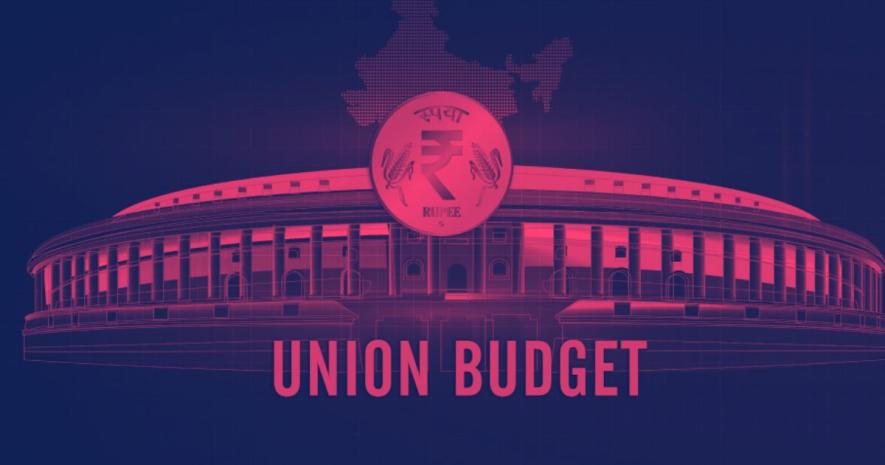Budget 2024–25: Of The, For the, By the Organised Sector

The corporate sector and the pink papers have largely welcomed the Union budget 2024–25. One can always wish for more but it is a relief if one is not hurt and there is a standstill.
It was expected that after the recent election results, the ruling Bharatiya Janata Party (BJP)-led government will introduce measures in the budget to bring back disaffected sections of the population into its fold. That required the budget to be pro-people— and such budgets are narrowly interpreted as anti-business by the Indian corporate sector.
There was also an expectation of a big package for the states from which the two major coalition partners supporting the ruling party in the government came, namely, Andhra Pradesh and Bihar.
There was also an expectation of a big package for the states from which the two major coalition partners supporting the ruling party in the government came, namely, Andhra Pradesh and Bihar.
The corporate sector feared that this would require additional taxes which would reduce their profits. Any additional tax could not be mobilised from the middle class since there was talk of reducing their tax to boost demand and bring them into the ruling party’s fold.
In short, the additional revenue was expected to be obtained from the organised sector that, in any case, pays most of the taxes and provides non-tax resources to the government.
Further, the organised sector has been growing post the pandemic, as reflected in the Gross Domestic Product (GDP) data, so its income share in the economy has risen and it can afford to pay more taxes.
Camouflaged intentions
Given all this, the post-election budget was expected to be rather different from the pre-election budgets. The interim budget presented on February 1, 2024 can be used to assess the change in priorities.
To accommodate the new priorities, if any, the overall size of the budget needed to be much larger. The increase is only 1 percent from ₹47.66 lakh crore to ₹48.20 lakh crore— hardly any change.
Suppose this was done so as not to increase the fiscal deficit. In that case, a re-prioritisation was required— a substantial increase in allocations to priority areas and cutting back on other expenditures. But that is hardly in evidence.
This lack of change had to be camouflaged by making a show of big changes. A standard technique for this is to announce a five-year expenditure target while allotting little in the current budget. For instance, with much fanfare, it has been announced that the 500 biggest companies will provide internships to one crore youth.
Sounds great. But this is over five years. Further, since the scheme has not yet been fleshed out, hardly any funds are needed from the current budget. So, for an allocation of ₹10,000 crore, a big buzz has been generated on employment.
The other technique is to announce schemes where the budget provides no funds. These are financed by loans from financial agencies. A crucial example of this is the ₹15,000 crore announced for the Amaravati capital project of Andhra Pradesh.
This will be a loan from multilateral agencies facilitated by the Union government. So the budget does not have to allocate anything. Similarly, the big announcements for creating infrastructure in Bihar and Andhra Pradesh do not need much money now.
Additional revenue was expected to be obtained from the organised sector that, in any case, pays most of the taxes and provides non-tax resources to the government.
For them, schemes will have to be drawn up to start the work and that may take years to complete. So, funds may have to be allocated later. In fact, some of the schemes mentioned are earlier ones that were languishing and they may continue to languish.
Consequently, allocations to these two favoured states are hardly reflected in any sharp rise in the head, ‘transfers to the states’ in the current budget. In 2022–23, this head was allotted ₹2,73,393 crore.
In 2023–24, it was increased to ₹3,24,641 crore. But expenditure was ₹2,73,985 crore. Almost the same as in the previous year, which means, adjusted for inflation, it was less by 5–6 percent in real terms. For 2024–25, it has been allotted ₹3,22,787 crore— less than what was allotted in 2023–24.
It is a tragedy of errors. Other states needlessly feel discriminated against and feel that federalism is being subverted while Bihar and Andhra Pradesh will get little directly from the budget. It is also surprising that the ruling parties in these two states think that they have got their due for supporting the ruling party.
The Union finance minister also uses the following three techniques to make tall claims:
- Expenditures to key heads are increased just to cover inflation. In 2023–24, expenditure under the head ‘agriculture and allied activities’ was ₹1,40,533 crore while it had been allotted ₹1,44,214 crore. Now it is allotted ₹1,51,851 crore. This is 8 percent above the earlier expenditure, but 5.2 percent over the allotment which is just covering inflation.
- In many cases, adjusted for inflation there is a decrease in allocation. As in the case of ‘transfer to states’ discussed above. This is also the case for the head ‘development of Northeast’. Mahatma Gandhi National Rural Employment Guarantee Scheme (MGNREGS) is allotted ₹86,000 crore, exactly what was allotted last year, which is 5 percent less in real terms.
- In some critical areas, funds are allotted but partially spent. Next year allocations are enhanced to show a greater increase above what was spent. Take the case of health. In 2022–23, ₹73,551 crore was spent. In 2023–24, the allotment was ₹88,956 crore but expenditure was ₹79,221 crore. For 2024-25, allotment is ₹89,287 crore. So, it appears to be a 12 percent increase over the expenditure but over the allotment, it is a 0.3 percent increase.
Analysis of schemes under ‘outlay on major schemes’ shows that these three issues appear time and again in the case of most of the key schemes of the government.
One can list:
National AYUSH Mission
Samagra Shiksha
Pradhan Mantri Poshan Shakti Nirman
Ayushman Bharat— Pradhan Mantri Jan Arogya Yojana (PMJAY)
Atal Mission for Rejuvenation and Urban Transformation (AMRUT)
Smart Cities Mission
Swachh Bharat Mission (SBM) (Urban)
Jal Jeevan Mission (JJM) or National Rural Drinking Water Mission
Swachh Bharat Mission (Gramin)
National Social Assistance Programme
Pradhan Mantri Awas Yojna (PMAY)— Rural
Post-matric Scholarship for SCs
Pradhan Mantri Anusuchit Jaati Abhyuday Yojana (PM AJAY)
Programme for Development of Scheduled Tribes (PM Vanbandhu Kalyan Yojna)
Mission Shakti (Mission for Protection and Empowerment for Women)
Pradhan Mantri Garib Kalyan Anna Yojana (PMGKAY)
Pradhan Mantri Swasthya Suraksha Yojana
These are schemes largely for the marginalised sections. These sections also face a substantial cut of ₹35,000 crore in their food and fertiliser subsidies.
A little bit of the overall increase in the budget goes to allocation to defence, finance, interest, information technology and telecom, home affairs, others, transport, etc.
It is surprising that the ruling parties in Bihar and Andhra Pradesh think that they have got their due for supporting the ruling party.
These largely reflect the requirements of the organised sector such as the postal life insurance schemes and the acquisition of defence equipment.
Organised–unorganised split
There is a clear divide between the unorganised and organised sectors as far as the policy makers are concerned. They have favoured the latter over the former. The unorganised sector has been suffering due to a shift in demand to the organised sector.
Reports to this effect have been coming from sectors such as trade, leather goods and the luggage industry. This is the K-shaped post-pandemic recovery that most analysts talk of— the growing organised sector and the declining unorganised sector.
This marginalising growth is the underlying cause of the major problems of the Indian economy and society— unemployment, rising inequality, slowing growth, inflation and low private sector investment in spite of the concessions it has been receiving.
When a large number of people are impacted adversely, it reflects in the voting behavior and that is what hurt the ruling party in the 2024 elections. Unfortunately, the government has been in denial and has still not applied the much-needed correctives in the Union budget 2024–25.
The adverse election results have only brought about a show of addressing the problem of unemployment and agriculture.
The adverse election results have only brought about a show of addressing the problem of unemployment and agriculture.
Why could the government not raise the overall expenditures substantially? This is due to two reasons. First, the government did not want to increase the tax on the well-off sections that have made big gains in recent years. Second, the government’s self-imposed limitation on the fiscal deficit to keep international agencies happy.
Conclusion
So, pleasing international agencies and keeping the organised sector happy are more important for the government than taking care of the critical problems facing the Indian economy.
This neither makes India self-sufficient nor a Vishwaguru. One can characterise the budget 2024–25 as ‘of the, for the and by the organised sector’.
Arun Kumar is a Retired Professor of Economics at the Jawaharlal Nehru University.
Get the latest reports & analysis with people's perspective on Protests, movements & deep analytical videos, discussions of the current affairs in your Telegram app. Subscribe to NewsClick's Telegram channel & get Real-Time updates on stories, as they get published on our website.
























